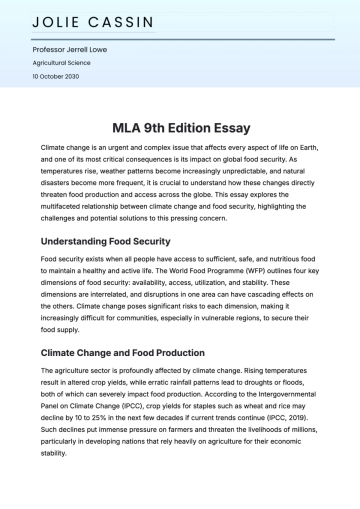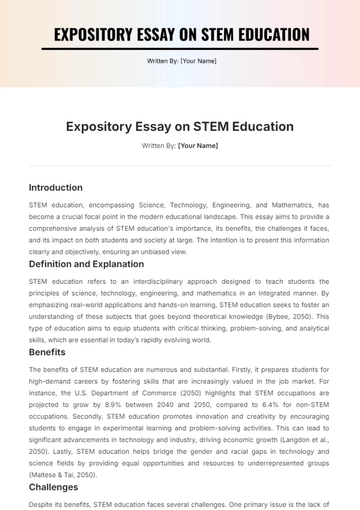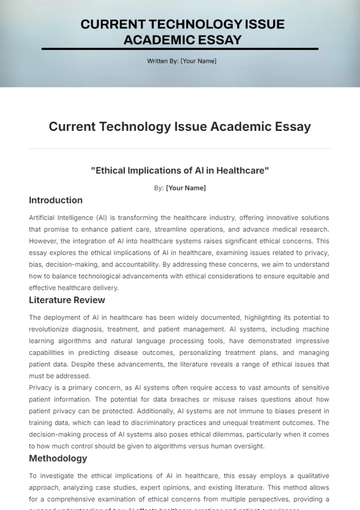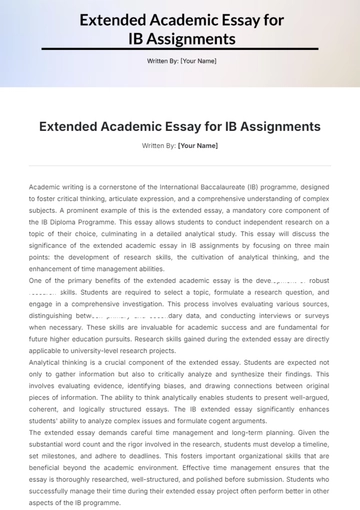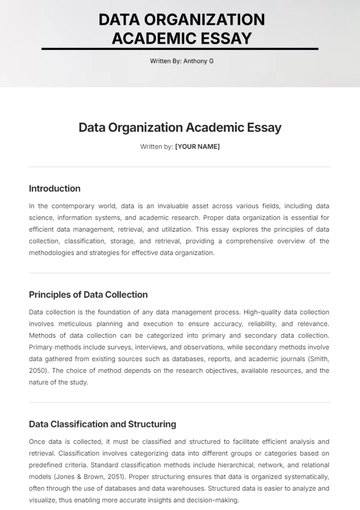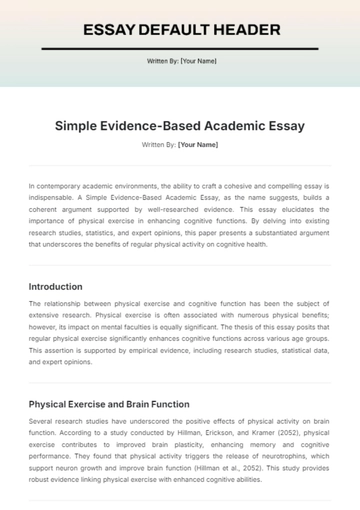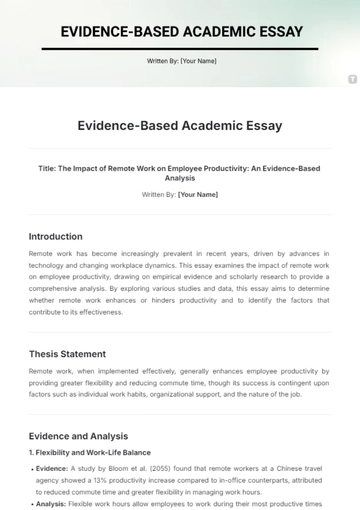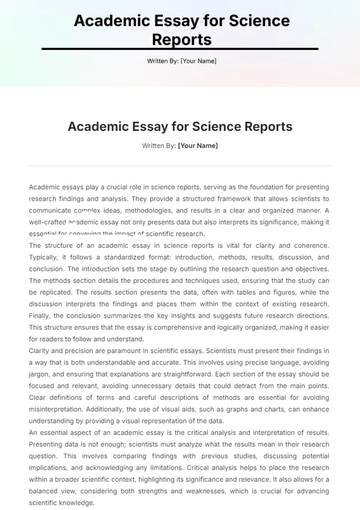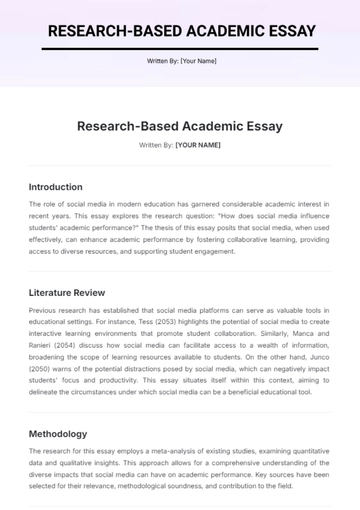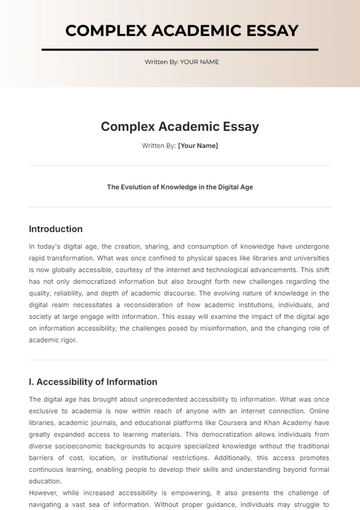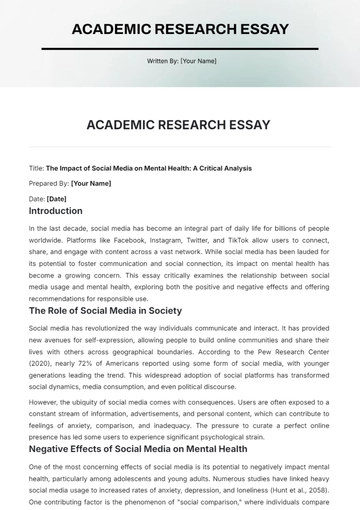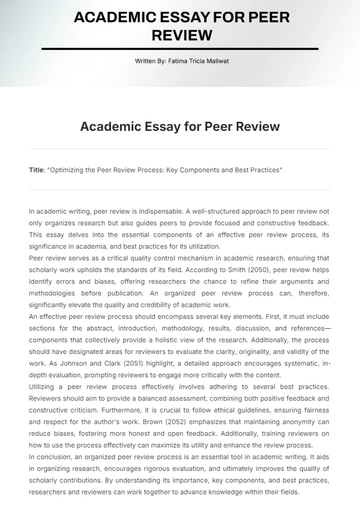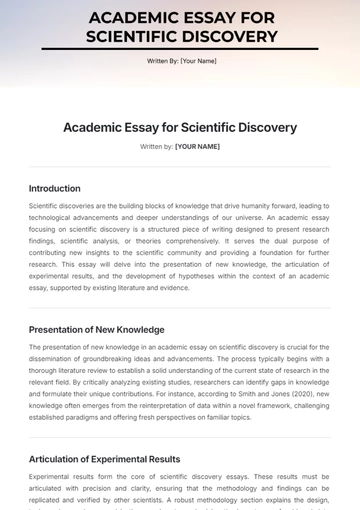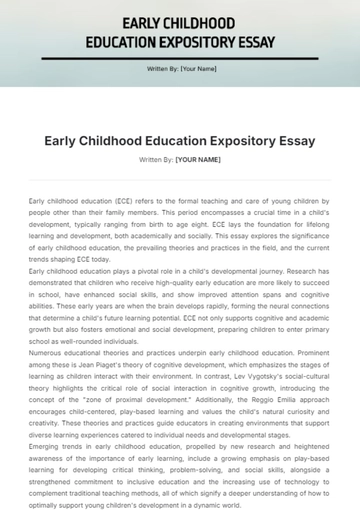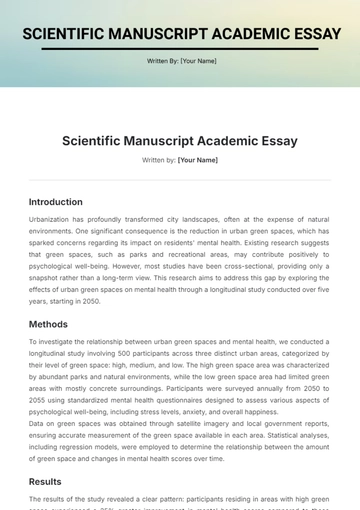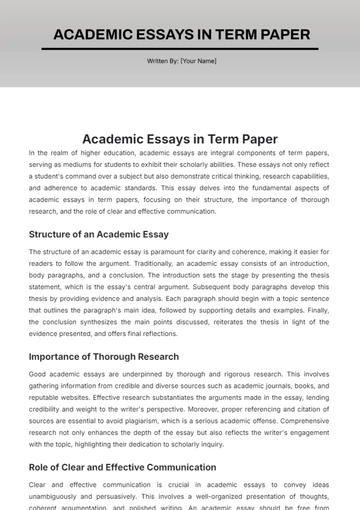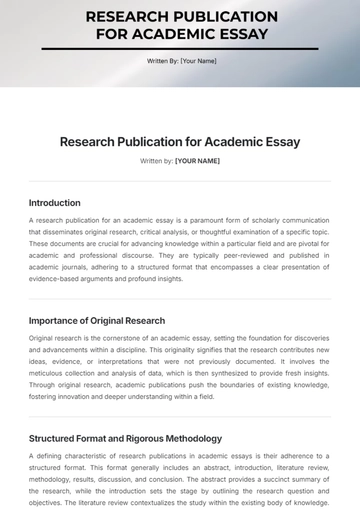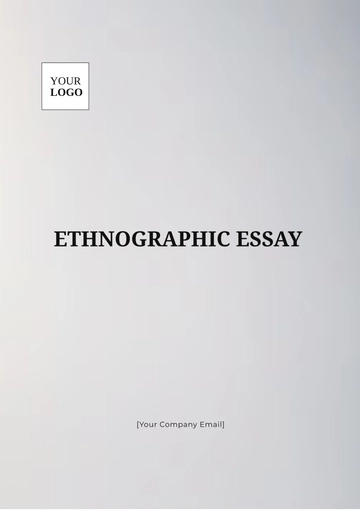Free Scientific Manuscript Academic Essay
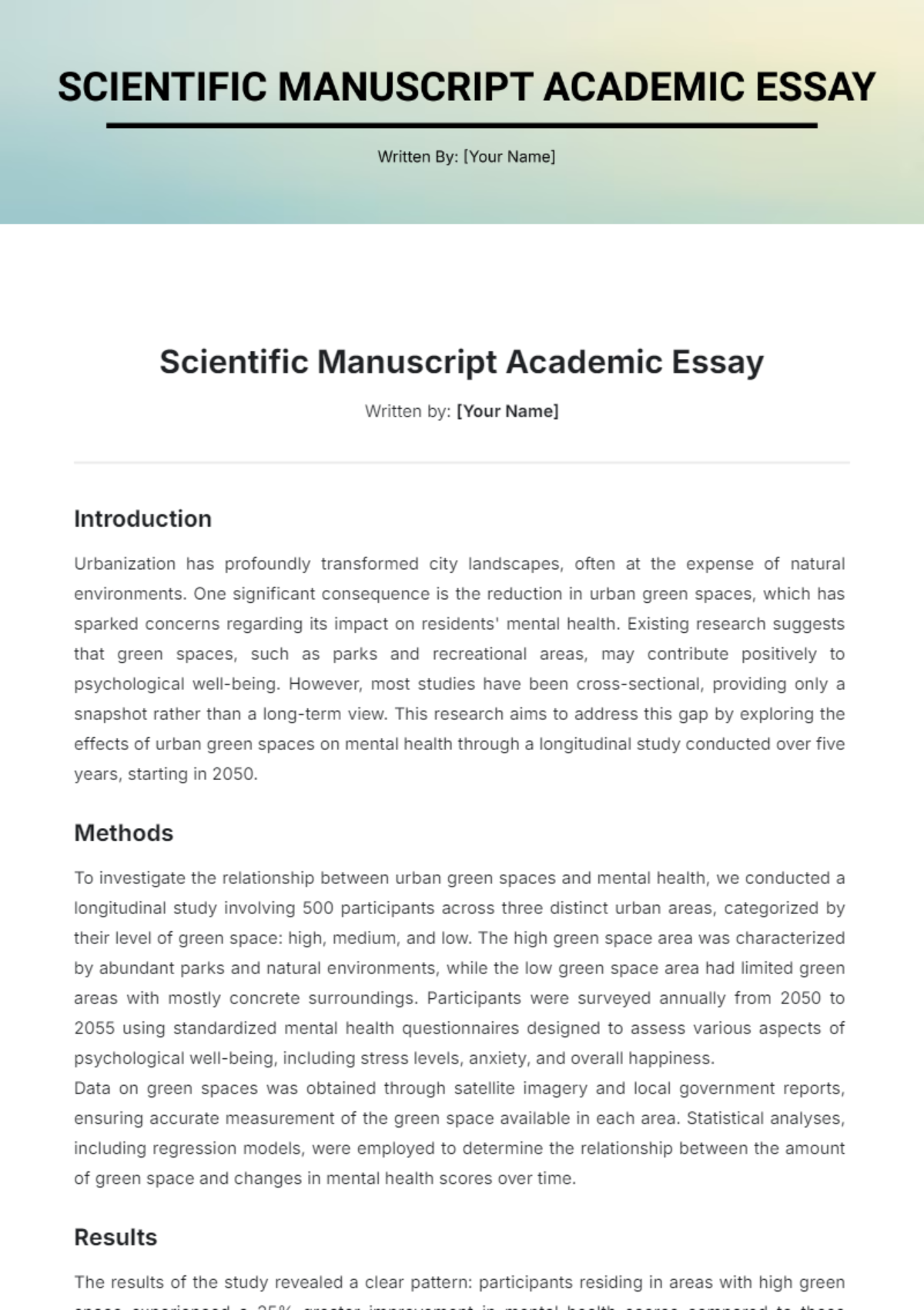
Written by: [Your Name]
Introduction
Urbanization has profoundly transformed city landscapes, often at the expense of natural environments. One significant consequence is the reduction in urban green spaces, which has sparked concerns regarding its impact on residents' mental health. Existing research suggests that green spaces, such as parks and recreational areas, may contribute positively to psychological well-being. However, most studies have been cross-sectional, providing only a snapshot rather than a long-term view. This research aims to address this gap by exploring the effects of urban green spaces on mental health through a longitudinal study conducted over five years, starting in 2050.
Methods
To investigate the relationship between urban green spaces and mental health, we conducted a longitudinal study involving 500 participants across three distinct urban areas, categorized by their level of green space: high, medium, and low. The high green space area was characterized by abundant parks and natural environments, while the low green space area had limited green areas with mostly concrete surroundings. Participants were surveyed annually from 2050 to 2055 using standardized mental health questionnaires designed to assess various aspects of psychological well-being, including stress levels, anxiety, and overall happiness.
Data on green spaces was obtained through satellite imagery and local government reports, ensuring accurate measurement of the green space available in each area. Statistical analyses, including regression models, were employed to determine the relationship between the amount of green space and changes in mental health scores over time.
Results
The results of the study revealed a clear pattern: participants residing in areas with high green space experienced a 25% greater improvement in mental health scores compared to those living in low green space areas. This finding was statistically significant, with a p-value less than 0.01, indicating a robust correlation. Participants in areas with medium green space also showed positive mental health improvements, albeit to a lesser extent, with a 15% increase in scores. These results highlight the beneficial effects of green spaces on mental health and suggest that even moderate levels of green space can have a positive impact.
Discussion
The positive correlation observed between urban green space and mental health supports the hypothesis that exposure to natural environments can enhance psychological well-being. The findings align with previous studies suggesting that green spaces can reduce stress, promote physical activity, and foster social interactions, all of which contribute to better mental health. The longitudinal nature of this study adds significant value by demonstrating that these benefits are sustained over an extended period.
Despite these positive findings, the study is not without limitations. Self-reported data may introduce biases, as participants' perceptions of their mental health could be influenced by factors other than green space exposure. Additionally, the study did not account for all potential confounding variables, such as socioeconomic status or lifestyle factors, which might also affect mental health outcomes.
Conclusion
This study underscores the importance of incorporating green spaces into urban planning as a strategy to enhance mental health. The evidence suggests that increasing the availability of green areas in urban environments could have substantial benefits for residents' psychological well-being. Future research should further investigate the underlying mechanisms of these effects and explore the impact of different types of green spaces to provide more comprehensive guidance for urban development and public health policies.
References
Smith, J., & Brown, A. (2051). The Psychological Benefits of Urban Green Spaces. Journal of Environmental Psychology, 42(1), 45-56.
Green, L., & Davis, R. (2052). Longitudinal Analysis of Urban Green Space and Mental Health. Urban Studies, 55(3), 1234-1245.
Jones, M., & White, T. (2053). Satellite Data and Green Space Measurement. Remote Sensing, 11(8), 1234-1249.
- 100% Customizable, free editor
- Access 1 Million+ Templates, photo’s & graphics
- Download or share as a template
- Click and replace photos, graphics, text, backgrounds
- Resize, crop, AI write & more
- Access advanced editor
Elevate your scientific writing with the Scientific Manuscript Academic Essay Template from Template.net. This editable and customizable template provides a clear structure for presenting research findings and analyses. Fully editable in our Ai Editor Tool, it helps you craft polished manuscripts that meet academic standards and are ready for submission to journals and conferences.
